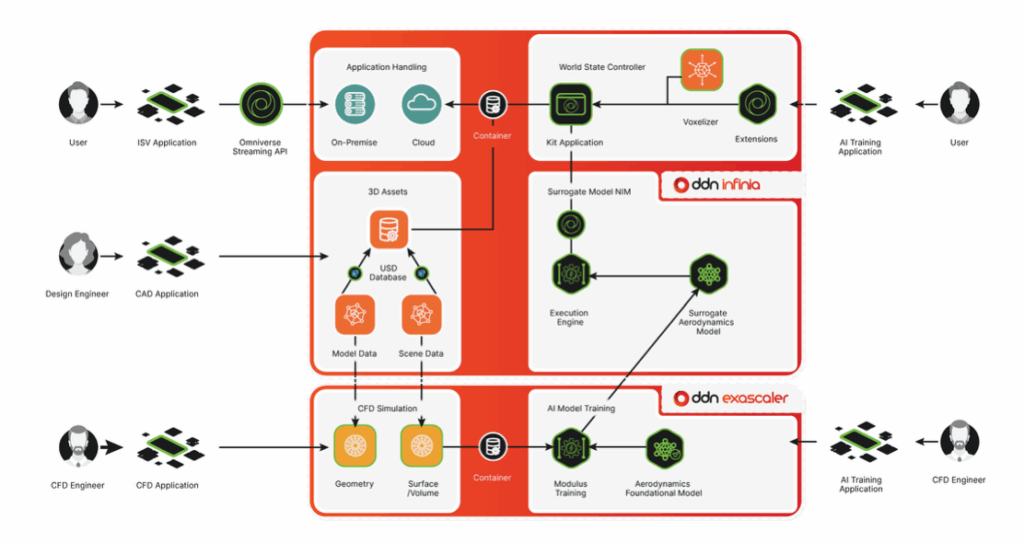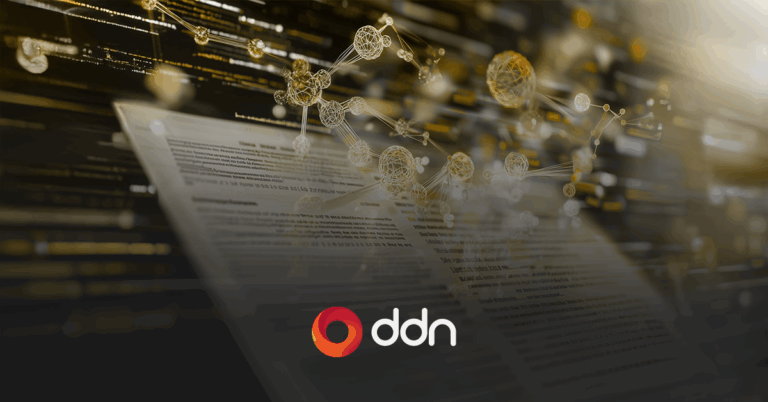The Manufacturing Industry Today
Today’s manufacturing landscape is shaped by transformation and volatility. As economies adapt and respond to changes such as the impact of the COVID-19 pandemic, disruptions in supply chains, and a workforce that is increasingly distributed around the globe, manufacturers must accelerate their shift toward digitalization and automation, driven by the need to be resilient against future disruptions.
The adoption of Al, loT, and robotics has become essential, with companies investing heavily in smart manufacturing and Industry 4.0 initiatives to boost productivity and operational agility. This digital evolution is also fueled by growing demands for sustainability, which place pressure on manufacturers to reduce waste, improve energy efficiency, and lower carbon footprints— all now crucial for meeting regulatory standards and fulfilling modern consumer expectations.
In recent years, manufacturers have faced mounting challenges, including supply chain constraints, rising material and energy costs, and labor shortages. These factors have prompted companies to rethink and, in some cases, regionalize supply chains, reducing dependencies on single-source suppliers. This shift has led to the adoption of innovative supply chain management solutions and strategic realignments. Meanwhile, raw material costs-driven by inflation and global demand-have pressured manufacturing margins, while labor shortages push manufacturers to adopt automation and robotics while increasing investments in workforce upskilling and retraining to bridge the talent gap.
The rapid pace of technological advancement means that remaining competitive requires continuous investment in new systems, cybersecurity, and training. For many, the path forward requires a balanced approach that maintains profitability while prioritizing efficiency, resilience, and environmental responsibility.
The common underlying need in such a balanced approach is the need for a unified and intelligent data management layer that handles the deluge of data, seamlessly moves it across the corporate network, and provides actionable insights.
DDN’s Al-optimized data intelligence platform empowers manufacturing companies to embrace advanced digital twin simulations with high scalability, unmatched low latency, and reliable performance. These platforms are built to handle massive data workloads seamlessly, delivering real-time operational insights critical for informed decision-making, resource optimization, and maximizing productivity. With over 1.4 TB/s of data throughput and storage capacity extending to exabyte scale, DDN enables companies to handle data intensive processing at unprecedented speeds and scale, setting new standards for data-driven manufacturing solutions.
Digital Twins: Helping Solve Manufacturing Challenges
A “digital twin” in manufacturing is a highly detailed virtual model that mirrors a physical asset, process, or production system. Using real-time data from loT sensors, connected devices, and other sources, digital twins give manufacturers unparalleled insights into their operations, enabling them to optimize processes, anticipate issues, and make data-driven decisions. Digital twins are powerful tools for managing complex manufacturing environments, allowing simulations and testing in a virtual space before costly changes are made on the factory floor. By using digital twins, manufacturers can accurately predict outcomes and adjust operations without having to invest in complex physical tooling and processes for testing, enhancing efficiency and minimizing disruptions to actual production.
Digital twin solutions address a range of business challenges, particularly in predictive maintenance, process optimization, quality control, and product design. For instance, manufacturers can use digital twins to monitor equipment health and predict maintenance needs, minimizing downtime and extending machinery lifespan. In terms of process optimization, digital twins enable manufacturers to simulate changes in production lines, identify bottlenecks, and explore improvements without interrupting physical operations. For quality control, digital twins enable real-time tracking of production quality and early defect detection. Additionally, digital twins provide a virtual environment to test new product designs and manufacturing methods, significantly reducing the cost and time associated with physical prototypes.
While Al greatly enhances the predictive capabilities of digital twins, non-Al approaches can still provide meaningful insights. Basic digital twins can operate with rule-based systems, data analytics, and sensor-driven models, using historical data and real-time metrics to offer visibility into operations.
These digital twins lack advanced predictive capabilities, but they still deliver essential monitoring capabilities for asset and workflow management, using traditional data science and statistical modeling. However, Al-enhanced digital twins offer real-time adaptability, allowing systems to learn from data and make ongoing improvements with minimal human intervention, paving the way for resilient and self-optimizing manufacturing environments.
For quality control, digital twins enable real-time tracking of production quality and early defect detection. Additionally, digital twins provide a virtual environment to test new product designs and manufacturing methods, significantly reducing the cost and time associated with physical prototypes.
DDN’s data intelligence platform provides the high-performance backbone that powers Al and non-Al digital twins, allowing manufacturers to harness and analyze massive data flows at sub-millisecond latency. Designed to meet the demanding requirements of Al-driven workloads, DON enables accelerated Al model training, inference, and data analytics by ensuring seamless data access for NVIDIA Al Enterprise platforms, including NI Ms and NeMo, with high throughput and ultra-low latency.
Simulation in Manufacturing
While a digital twin is the representation of a physical environment, it is static in nature. Manufacturing simulation uses the digital twin to create dynamic virtual representations of production processes, machinery, and systems, allowing manufacturers to test and refine different configurations without disrupting actual operations. With simulation, manufacturers can forecast production outcomes, identify bottlenecks, and evaluate the impact of changes in machinery, labor, or supply chain inputs. Simulation becomes a strategic tool for improving efficiency, lowering costs, and reducing risks by addressing potential issues virtually before implementing changes in physical settings.
One of the primary issues that simulation addresses is production inefficiency. By modeling different scenarios, manufacturers can identify ways to improve throughput, optimize labor allocation, and reduce downtime.
Simulation can show the best resource allocation on a production line, the optimal maintenance schedules to prevent bottlenecks, or how to adjust workflows based on seasonal production needs. By empowering manufacturers to make informed, data-driven decisions, simulation ultimately reduces costs, improves quality, and increases production speed. Non-Al simulation techniques, such as discrete-event simulation (DES) and statistical modeling, allow manufacturers to model production flows based on historical data and predefined rules. These techniques are particularly valuable for stable or linear processes but may fall short when dealing with highly variable or complex systems. Spreadsheet-based simulations, which involve basic models to estimate production metrics under certain conditions, are another non-Al approach. Although these traditional simulations can yield insights, they are often limited in scalability and adaptability. When simulations rely on non-Al methods, they generally lack the capacity to incorporate complex, real-time variables like demand shifts, sudden equipment failures, or changes in labor availability.
While non-Al simulation methods are useful for static planning, they often cannot provide the predictive insights and real-time optimization capabilities that Al-enhanced simulations offer. Al-based simulations support real-time adaptability, enabling manufacturers to address issues proactively and optimize production processes continuously. DDN’s data intelligence platform supports both Al-enhanced and traditional simulation techniques, empowering manufacturers to take a proactive approach to operational optimization.
DDN’s data intelligence platform empowers manufacturers to transform raw data from loT sensors, production equipment, and external sources into actionable insights in real-time. This capability drives smarter, faster decision-making, enabling adaptive and resilient manufacturing. By seamlessly supporting continuous simulation and real-time insights, DDN allows manufacturers to dynamically optimize production processes, reduce downtime, and improve overall operational efficiency.
Key Benefits of Digital Twins and Simulation Solutions in Manufacturing
As we’ve shown, digital twins and simulation solutions are now essential for modern manufacturing due to their ability to create virtual replicas of physical processes, machinery, and workflows. When coupled with DDN’s data intelligence platform, manufacturers can harness these solutions to:
- Optimize Production
Leverage DDN’s high-performance data platform to simulate multiple process scenarios at scale, enabling faster iterations to enhance efficiency, increase throughput, and ensure consistent output quality. - Predict and Prevent Failures
DDN’s real-time data ingestion and advanced analytics capabilities enable predictive maintenance by continuously monitoring equipment performance, reducing unexpected downtime, and improving overall equipment effectiveness (OEE). - Enhance Decision-Making
With DDN’s unified data intelligence platform, manufacturers can analyze real-time data streams across loT devices and production systems, enabling faster, data-driven decisions that improve resource allocation and drive better business outcomes.
The rapid adoption of Industry 4.0 and smart manufacturing amplifies the need for these digital solutions. Without them, manufacturers face challenges such as operational inefficiencies, unexpected machine failures, and high production costs. DDN’s data intelligence platform is the crucial data layer that enables high-throughput, low-latency data processing, allowing manufacturers to implement digital twins and simulations that are capable of evolving with industry demands.
Building an Al-Based Digital Twin and Simulation Solution in Manufacturing
Creating a full Al-based digital twin and simulation solution requires a meticulously integrated approach, from foundational infrastructure to the application layer. Each component-from data intelligence platforms to compute accelerators—must work in harmony to maximize throughput, computational efficiency, and system reliability.

Data Intelligence Platform: At the core is DDN’s data intelligence platform, which includes high-performance compute nodes, application accelerators, scalable data storage, and low-latency connectivity. The platform’s modularity enables easy scaling as data demands grow, with support for NVIDIA’S network, ensuring low-latency, high bandwith data communication across nodes.
Compute and Acceleration: This layer includes NVIDIA H100 and NVIDIA GB200 accelerators, which are optimized for deep learning tasks, high-performance computing (HPC), and parallel processing in simulations. With DDN’s platform delivering up to 1.4 TB/s throughput, manufacturers can analyze complex datasets in real-time, ensuring that simulation adjustments are made dynamically.
Data Processing and Modeling: Data from sensors is processed, normalized. and categorized for immediate simulation use. With tools like NVIDIA RAPIDS, manufacturers can process millions of data points in real-time, ensuring simulations are accurate and actionable. DDN’s platform supports this processing power, reducing latency to sub-millisecond levels for fast, reliable insights.
Al/ML Training and Inference: Using frameworks like TensorFlow or PyTorch on NVIDIA GPUs, manufacturers can train models on historical and real-time data, allowing digital twins to improve predictive accuracy. With DDN’s Al-optimized infrastructure, manufacturers can perform RAG-enabled, real-time inference at scale, enabling models to continuously update and provide insights as conditions change.
Visualization and Simulation: Visualization tools like NVIDIA Omniverse provide 3D interfaces to display real-time metrics, simulations, and predictive analytics. These tools integrate seamlessly with DDN’s data platform to transform raw data into actionable insights, supporting efficient monitoring and decision-making.
Want to Know More?
With DDN’s Data Intelligence Platform, manufacturing businesses implementing Al-driven digital twins and simulations unlock significant advantages such as enhanced operational efficiency, cost savings, and optimized resource allocation. Often, DDN systems improve the GPU infrastructure efficiency so much that they usually pay for themselves in a short period of time. To learn how DDN can help transform your operations, visit our website today. Let’s start driving smarter, with faster results together!
